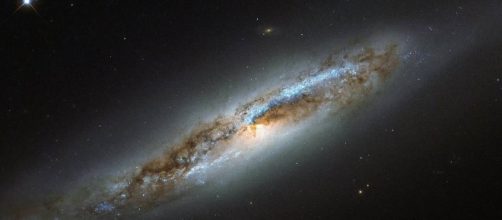NASA´s Fermi Gamma-ray Space Telescope found a signal situated at the very core of the Andromeda Galaxy (M31), suggesting that it could be produced by a strange type of matter called dark matter. The signals are comparable to the ones Fermi discovered at the center of the Milky Way. It´s believed that the invisible matter hides in the center our own galaxy and other galaxies in the universe. The gamma rays discovered are believed to be produced by two sources; dark matter or a concentration of pulsars.
Dark matter
This is a type of matter that cannot be detected due that it does not emit nor interact with electromagnetic radiation, rendering it invisible.
Even though it has not been observed, scientists infer its existence when it interacts with planets and galaxies ‘gravitational force. Based on the standard model of cosmology, it´s estimated that the universe is composed of 5% ordinary matter; 27% dark matter; and the rest, 68%, is dark energy. The light to mass ratio in gravitational lensing suggests the presence of dark matter.
Pulsar
This is a neutron star that rotates at a set period-seconds or milliseconds, emitting electromagnetic radiation. Scientists are able to detect them when the emitting beam of light points in the direction of earth. These types of astronomical bodies are very dense. It’s believed that the rotational periods in pulsars induce a rotating magnetosphere driving particles to ultra-high energies (cosmic rays).
Pulsars originate from the collapse of a massive star in a super nova explosion.
Sources of cosmic ray emission
Cosmic rays- highly energetic particles originate outside of the solar system and are composed of protons and atomic nuclei. It´s believed that they stem from supernovae outbursts and that their interaction with dark matter could produce the gamma rays observed by Fermi telescope.
Scientists believe that another possible source for the emission of gamma rays at the center of M31 is a group of pulsars emitting signals of gamma rays. To determine the real source of these rays, scientists can relate previous information of the nature observed in the Milky Way.
Andromeda and the Milky Way galaxies
Although, astronomers don´t really understand the way in which cosmic rays influence galaxies, they hope that the observations made in M31 will allow them to compare what´s been observed in both-the Milky Way and M31.
Scientists believe that the physical similarities between both galaxies will allow them to understand more about our own galaxy formation. Further studies will permit to discover the real source of the gamma ray signals and possibly the real nature of dark matter.

